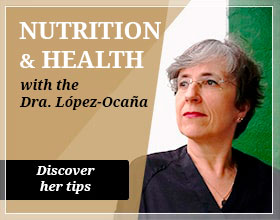Salt is very present in our diet. However, is it bad for health or does it have benefits? What types of salt are there?
Salt (sodium chloride mineral) is composed of sodium and chlorine, which have a series of functions, important functions, in the body. These are, among others, favoring the nerve impulse of neurons, keeping water inside and outside the cell and being part of muscle contractility.
Salt is added to food as it improves the palatability of food, as well as being an excellent preservative and flavor enhancer.
Is salt bad for health?
Although it fulfills certain functions, if it is added and/or taken in excess, it favors the appearance of diseases such as high blood pressure, kidney disease, cardiovascular accidents and cerebrovascular accidents.
Because of this, no more than 5 grams of salt per day is recommended (only about 1.25 g a day is needed). The truth is, in the current diet, the intake of this mineral is far exceeded (more than double!) (Both as part of processed foods such as sausages, sausages, etc. and by adding it to food) so its consumption is recommended moderate.
Tip: Read the labels of processed foods to be well informed. With this information, you can know the following:
- If a processed food contains more than 1.25 g / 100 g of product, it is considered to have a lot of salt.
- There is a low salt content if it is less than or equal to 0.12 grams /100 grams. Among the Serrats preserves, you can find various formats of white tuna in this range, and especially the white tuna low in salt.
- Very Low: if it has 0.04 g/ 100 g
- Without salt: less than 0.005 g
- Option without added salt, when no salt is added to the production process.
Types of salt
When shopping, you can find different types of salt:
- Table or common salt, with a percentage of sodium chloride of 100%, is a refined salt.
- Iodized salt: common salt to which sodium iodate has been added; it is usually the most recommended, since it prevents thyroid disorders.
- Sea salt: it is obtained from the evaporation of seawater or saltwater lakes; it is unrefined, does not contain iodine and contains, in addition to sodium chloride, other trace elements such as potassium, magnesium, among others.
- Maldon Salt: It is a flake salt, with a sodium chloride percentage of 98%.
- Himalayan pink salt: it comes from Pakistan, with 98% sodium chloride and some trace elements such as iron, sulfates, magnesium among others, which give it a pink color.
- Flower of salt: it is obtained when the superficial layer of the saltpans is scraped.
In addition, today there are different types of salt with added spices, flowers, fruit or vegetables, whose base is always sodium chloride, which can give our recipes a different touch of flavor. You must always take into account the amount of salt to ingest each day to take care of your health!








 Send us your recipe and win a fish preserved box
Send us your recipe and win a fish preserved box



